Imagine waking up in the morning and choosing your own adventure for the day, free from the confines of a traditional office. This is the allure of freelancing—a dynamic career path that offers independence, flexibility, and the potential to shape your destiny.
However, the journey to becoming a successful freelancer is not without its challenges. How do you carve out your niche and attract your first clients? Let’s embark on this exhilarating ride, uncovering strategies and insights that will pave your way to a thriving freelance career.
Understanding Freelancing
Before discussing how to start freelancing, it’s essential to grasp what it truly entails. It’s more than just working for yourself; it’s about embracing a lifestyle where you’re in control of your professional journey.
What is Freelancing?
Freelancing is a form of self-employment in which individuals offer their skills and services to multiple clients, often on a project-by-project basis. Unlike traditional employment, freelancers can choose their assignments, set their own schedules, and work from virtually anywhere. This flexibility is akin to being a captain steering your own ship through uncharted waters.
However, with great freedom comes great responsibility. Freelancers must manage their own finances, healthcare, and workload, making it imperative to possess a blend of creativity and discipline.
The freelance world is diverse, encompassing writing, graphic design, programming, consulting, and more. Each niche requires a unique set of skills, but all demand a proactive approach to client acquisition and project management.

The Benefits of a Freelance Career
The benefits of a freelance career are as enticing as a treasure chest waiting to be opened. First and foremost, freelancers enjoy unparalleled flexibility, allowing them to tailor their work around personal commitments or travel aspirations. This adaptability is especially valuable in today’s fast-paced world, where work-life balance is often elusive.
Moreover, freelancing offers the potential for higher earnings. By cutting out the middleman, freelancers can often charge rates that reflect the true value of their expertise.
Additionally, the diversity of projects keeps the work engaging and stimulating, preventing the monotony that can plague traditional jobs. The ability to choose clients and projects also means that freelancers can align their work with their passions and values, fostering a sense of fulfillment and purpose.
Common Misconceptions About Freelancing
Despite its appeal, freelancing is often shrouded in misconceptions. One common myth is that freelancers have endless free time. While it’s true that they control their schedules, managing multiple clients and projects requires effective time management and dedication.
Another misconception is that freelancing is less stable than traditional employment. In truth, with the right strategies, freelancers can cultivate a steady stream of work and income.
Don’t be swayed by the myth that freelancing is easy money. Success in freelancing demands a proactive approach to finding clients and consistently delivering quality work. Establish a routine that balances client projects with personal development and networking. Embrace continuous learning to stay ahead in your field and offer competitive services.

Getting Started on Your Freelancing Journey
Embarking on a freelance career is akin to setting sail on a new voyage. It requires preparation, determination, and a clear map to navigate the seas of opportunity. Let’s delve into the foundational steps of launching your freelancing journey.
Identifying Your Skills and Niche
Every successful freelancer begins by identifying their unique skills and carving out a niche. This is your anchor, the foundation upon which you’ll build your freelance business. Consider your strengths, passions, and market demand. Are you a wordsmith with a knack for storytelling, or a tech-savvy developer with an eye for innovation?
Once you’ve pinpointed your skills, research the market to understand the demand and competition in your chosen niche. This insight will guide you in tailoring your services to meet client needs effectively. Remember, specialization can set you apart from the crowd, making you a sought-after expert rather than a jack-of-all-trades.
Setting Up Your Freelance Business
Transitioning from idea to action requires setting up your freelance business. Begin by crafting a compelling brand identity that resonates with your target audience. Your brand should reflect your values, expertise, and unique selling proposition. This is your beacon, guiding potential clients to your shores.
Next, establish the necessary legal and financial structures. Register your business, set up a separate bank account, and familiarize yourself with tax obligations. These steps may seem mundane, but they are crucial in ensuring a smooth and professional operation. A well-organized business is like a well-oiled machine, running efficiently and effectively.

Creating an Impressive Portfolio
Your portfolio is your showcase, a testament to your skills and accomplishments. It’s the first impression potential clients will have of you, so make it count.
Curate a selection of your best work, highlighting projects that demonstrate your expertise and versatility. If you’re just starting out, consider offering pro bono work or collaborating on projects to build your portfolio.
An impressive portfolio is your golden ticket to attracting clients. Choose projects that highlight your skills and versatility, showcasing a range of styles and solutions.
Keep your portfolio updated with recent work, and include client testimonials to add credibility. A visually appealing and well-organized portfolio can leave a lasting impression on potential clients.
Mastering the Art of Landing Clients
Landing your first clients is a pivotal milestone in your freelance journey. It’s akin to catching the wind in your sails, propelling you forward. Let’s explore strategies to master this art and secure meaningful collaborations.
Effective Networking Strategies
Networking is the lifeblood of freelancing, a web that connects you to potential clients and collaborators. Attend industry events, join online communities, and engage with fellow professionals on social media platforms. Building genuine relationships can lead to referrals and opportunities that may not be advertised publicly.
Moreover, leverage LinkedIn’s power to showcase your expertise and connect with decision-makers in your industry. Share valuable content, participate in discussions, and demonstrate your thought leadership. Remember, networking is not just about taking; it’s about giving, contributing, and nurturing relationships over time.

Utilizing Freelance Job Platforms
Freelance job platforms are bustling marketplaces where clients and freelancers converge. Platforms like Upwork, Fiverr, and Freelancer offer numerous opportunities across various niches.
Create a compelling profile highlighting your skills, experience, and unique selling points. Use keywords strategically to increase your visibility in search results.
When applying for jobs, tailor your proposals to address the client’s needs and demonstrate your understanding of their project. A personalized approach shows that you value their business and are committed to delivering exceptional results. Remember, the competition is fierce, so make your proposals stand out with clarity and confidence.
Crafting Winning Proposals
A winning proposal is your ticket to securing a project. It’s your chance to showcase your expertise and convince the client that you’re the perfect fit for their needs. Begin with a strong introduction that grabs their attention and outlines your understanding of their requirements. Use concise and persuasive language to convey your value proposition.
Include a detailed action plan outlining how you intend to tackle the project and deliver results. Provide examples of similar work you’ve completed successfully and offer client testimonials to build trust. A well-crafted proposal is not just a pitch; it demonstrates your professionalism and commitment to excellence.
When crafting proposals, focus on clarity and relevance. Tailor each proposal to the specific client and project, addressing their unique needs and goals. Highlight your past successes with similar projects, and offer solutions that align with the client’s vision. A personalized, well-researched proposal can set you apart from the competition.

Freelancing Tips for Success
Success in freelancing requires more than talent; it demands strategic planning, discipline, and a willingness to adapt. Let’s explore practical tips for navigating the freelancing waters and building a thriving career.
Time Management and Productivity Hacks
Time management is the compass that guides freelancers through their daily tasks. Establishing a routine and setting clear priorities can enhance productivity and prevent burnout.
Use tools like Trello or Asana to organize tasks and track progress. Break down projects into manageable chunks, and allocate time for focused work and breaks.
Additionally, consider the Pomodoro Technique, which involves working in short bursts with regular breaks. This method can boost concentration and maintain motivation throughout the day. Remember, effective time management is not about working harder; it’s about working smarter and making the most of every moment.
Setting Your Rates and Negotiating
Determining your rates is a delicate balance between valuing your expertise and remaining competitive in the market. Research industry standards and consider factors such as experience, niche, and project complexity. Transparent pricing fosters trust with clients and sets clear expectations.
When negotiating, be confident in your value and articulate the benefits you bring. Be open to discussions and find common ground that satisfies both parties. Negotiation is an art, and mastering it can lead to mutually beneficial partnerships and long-term success.

Building Long-Term Client Relationships
Long-term client relationships are the backbone of a sustainable freelance career. Delivering high-quality work and exceeding client expectations can lead to repeat business and referrals. Communicate openly and regularly, providing updates on project progress and addressing any concerns promptly.
Show appreciation for your clients’ business and seek feedback to improve your services continuously. Building trust and rapport can turn one-time projects into ongoing collaborations, providing stability and growth opportunities in your freelance journey.
Real Stories from the Freelance Frontlines
Learning from those who have walked the freelancing path can provide valuable insights and inspiration. Let’s explore personal anecdotes and expert insights that illuminate the realities of freelancing.
Personal Anecdotes and Lessons Learned
Every freelancer’s journey is a tapestry woven with triumphs and challenges. Take Sarah, a graphic designer who transitioned from a corporate job to freelancing. Initially, she faced uncertainty and struggled to find clients. However, by leveraging her network and refining her portfolio, she landed her first major project, setting the stage for a flourishing career.
Sarah’s story underscores the importance of perseverance and adaptability. She learned to embrace rejection as a stepping stone to success, using feedback to hone her skills and offerings. Her journey is a testament to the resilience and determination required to thrive in the freelancing world.

Expert Insights and Quotes
Gleaning wisdom from seasoned freelancers can illuminate the path to success. John, a veteran freelance writer, emphasizes the importance of continuous learning. “The freelance landscape is ever-evolving,” he notes. “Staying updated with industry trends and expanding your skill set is crucial for maintaining a competitive edge.”
Meanwhile, Emma, a digital marketing consultant, highlights the significance of building a personal brand. “Your brand is your identity,” she asserts. “It’s what sets you apart and attracts clients who resonate with your values and vision. Invest time in crafting a brand that reflects your expertise and passion.”
Embracing the Freelance Lifestyle
Freelancing is more than a career; it’s a lifestyle that requires balancing work and personal life while staying motivated and overcoming challenges. Let’s explore strategies to thrive in this dynamic environment.
Balancing Work and Life
Achieving work-life balance is a delicate dance, especially in the freelancing realm, where boundaries can blur. Set clear work hours and create a dedicated workspace to separate professional and personal life. Prioritize self-care and allocate time for activities that rejuvenate and inspire you.
Remember, balance is not about equal time distribution; it’s about aligning your actions with your values and goals. Embrace flexibility and adjust your schedule to accommodate both work and personal commitments. A balanced lifestyle fosters well-being and enhances productivity.

Staying Motivated and Overcoming Challenges
Motivation is the fuel that propels freelancers forward, but maintaining it requires intentional effort. To sustain momentum, set achievable goals and celebrate milestones. Surround yourself with a supportive community of freelancers who can offer encouragement and advice.
Challenges are inevitable, but they are also growth opportunities. Embrace a problem-solving mindset and view setbacks as learning experiences. Resilience and adaptability are your allies in navigating the ebbs and flows of freelancing, ensuring a rewarding and fulfilling journey.
To stay motivated, set specific, achievable goals that align with your long-term vision. Break larger goals into smaller, manageable tasks, and celebrate each accomplishment.
Surround yourself with a supportive network of freelancers who can offer encouragement and share experiences. Regularly revisit your goals and adjust them to stay aligned with your evolving aspirations.





